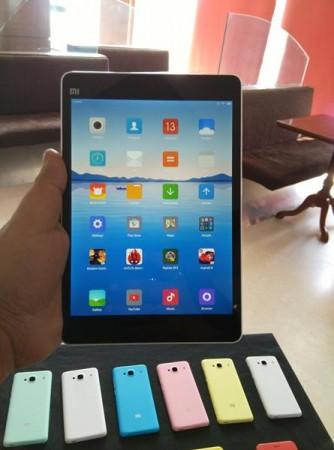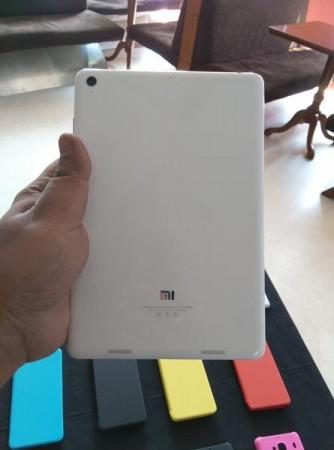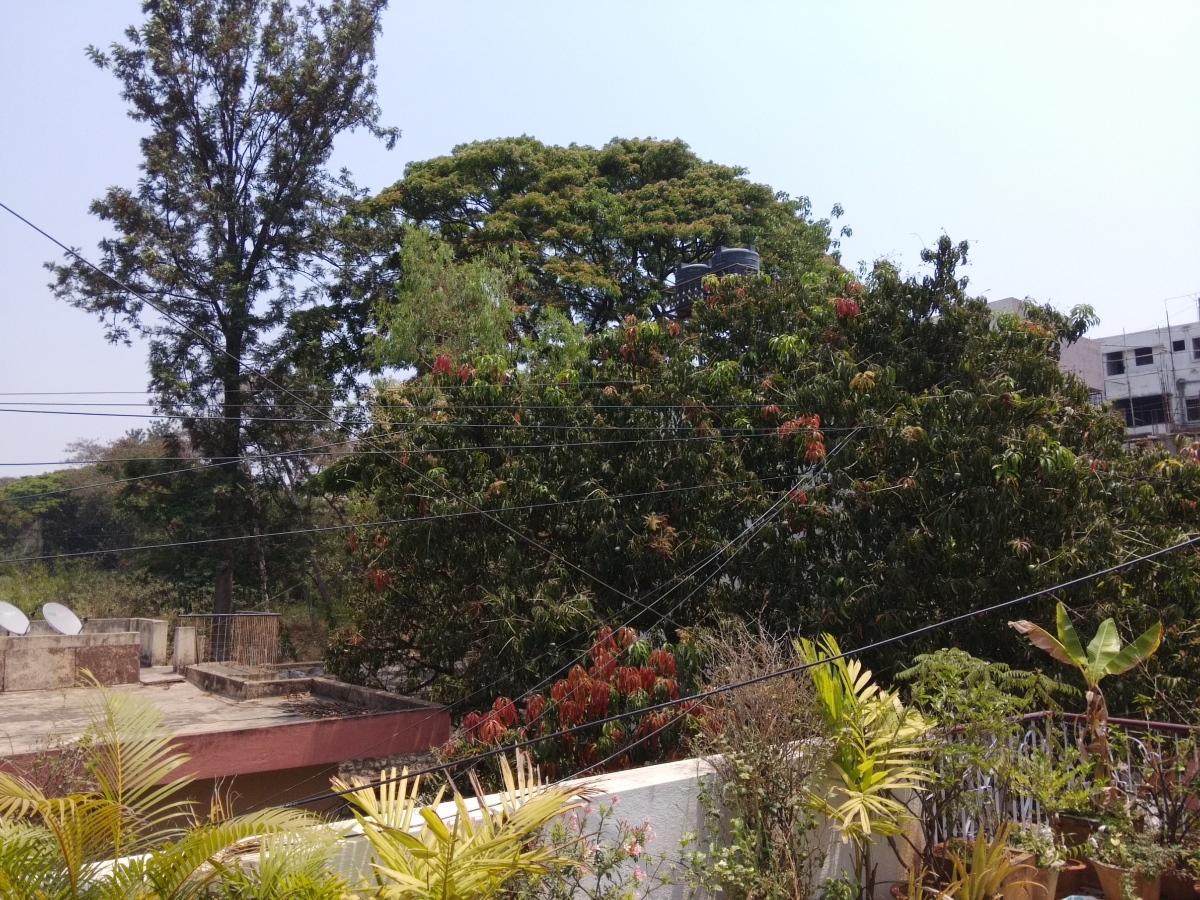
Xiaomi has earned a huge reputation by offering several value-for-money smartphones in the sub-continent, including India. Now, it has stepped into the tablet market with a similar concept. Yes, this time again, Xiaomi offers what their fans expect from them through Mi Pad -- power packed specifications, superior camera and a sturdy casing.
Taking its Apple competitor tagline seriously, Xiaomi configured the tablet to make it feel like an Apple iPad mini substitute. Offered in the similar price bracket of the popular budget Android tablet category, the Mi Pad will be available without the annoying Flash selling method. It is available for ₹12,999. Now, let's look into what the Mi Pad has to offer.
Design & Built
Once unboxed, you might be surprised by the similarities between the Mi Pad and iPad Mini. Featuring the identical glossy back cover of Redmi smartphones, the Mi Pad feels like a piece of brick in the hand. The non-removable shell uses solid materials to make the Mi Pad feel rugged and well-built.
Unlike Apple's iPad Mini, the Mi Pad features a Micro SD card on the left side to expand the memory up to 128GB further. The essential power/sleep and volumes rocker buttons sits on the right side, while the 3.5mm audio out button and the micro USB port is at the top and bottom, respectively.
The back of the Mi pad packs an 8-megapixel camera at the extreme top left and two perforated speaker mesh at the bottom. However, the Mi Pad sacrifices on the essential LED flash that helps users click in dim lighting condition. The glossy silver Mi logo has been engraved in between the speaker grilles. On the front, the 5-megapixel camera shares the top front space with another Mi logo and an array of sensors. At the bottom there are 3 physical capacitive buttons for executing Option, Home and Back commands.

Display
Impressively, the Mi Pad packs a 7.9-inch IPS LCD Display with a 2048x1536 pixels resolution. The display features almost similar pixels-per-inch measurement by featuring a 324PPI count in comparison to iPad Mini's 326 PPI retina display. Xiaomi made a wonderful addition by featuring 4:3 aspect ratio in the display which makes the display more usable in both portrait and landscape mode. For your information, most of the budget tablet displays feature screens having either 16;10 or 16:9 aspect ratio.
The display is impressive and brings out the images and videos in sharp yet balanced colours. The screen is also good for reading books and has an accurate light ambience sensor and supporting backlight.
Software
The Mi Pad retains Xiaomi's proprietary MIUI interface over the Android Kitkat 4.4. Rather than retaining the same MIUI as its smartphones, Xiaomi has reworked on the interface to make it more suitable for a tablet.
The MIUI sacrifices the usual app drawer and features everything on the home screen. The icons, widgets and the behaviour feel pretty similar to iPad. Xiaomi has refurbished all the widgets featured in the Mi Pad. But the interface has its drawback too. For example the interface lacks the MI theme store. Another big drawback of Xiaomi is it is still unable to offer the Android 5 Lollipop which can make the device perform even better.

Performance
Mi Pad is the first tablet to offer the NVIDIA Tegra K1 SoC. The System-on-Chip combines a Cortex A15 Quad-Core CPU clocked at 2.2GHz with a ULP GeForce Kepler GPU consists 192 cores. The powerhouse SoC has been combined with 2GB LPDDR3 RAM and 16GB inbuilt memory.
The Kepler-based GPU helps in playing all high-end Android games without any flaws. In our GFXBench test, the Mi Pad managed to achieve 42FPS. Mi Pad also remained impressive by achieving 48273 in our AnTuTu Benchmark test and an impressive 1616 in Vellamo Metal Benchmarking.
In our real life test the Mi Pad remained impressive by handling multiple apps activated together without any noticeable lag. It is also capable of allowing you playing several audio and video formats but the in-built speaker disappoints by offering distortions and muffles in highs. We also found the Mi Pad a tad difficult to hold while playing long session games in landscape mode.
The Mi Pad has sacrificed the essential SIM slot, which is an important factor among Indian buyers while opting for a tablet device. The missing SIM slot not only forces you depend on WiFi network for internet surfing, but also misses out on the essential call facility -- the biggest deterrent for an Indian user.
Camera & Battery
Tablets are usually not treated as primary snapping devices like smartphones. Hence most of the tablet devices offer average in-built cameras. Surprisingly, Mi Pad packs an 8-megapixel f/2.2 rear and a 5-megapixel camera which helps snapping images with good detailing and colour balance in ambient light. The rear camera is also able to focus quickly on subjects. However, the lack of an LED flash is a drawback while clicking in challenging lighting environment. The images are a bit muddy and offer less details and noises.
In our battery loop test, the Mi Pad survived a little over 13 hours while playing a 720p video in a loop. Quite impressive!
Wrapping Up
The Xiaomi Mi Pad is a solid-built tablet with a power-packed configuration to help users achieve decent usability and a great gaming experience. The performing ability of Mi Pad makes the tablet a decent buy for the price.
Key specifications of Xiaomi Mi Pad:
| Models | Xiaomi Mi Pad |
| Display | 7.9-inch QXGA (1536 x 2048 p) IPS screen with Gorilla Glass 3 shieldPixel density: 324 ppi |
| OS | Android 4.4.4 KitKat with MIUI |
| Processor | 2.2GHz Nvidia Tegra K1 quad-core Cortex A15 CPU |
| GPU | ULP GeForce Kepler (192 cores) |
| RAM | 2GB LPDDR3 |
| Storage capacity | 16GB, expandable up to 128GB |
| Camera |
|
| Battery | 6700 mAh |
| Network | No SIM slot |
| Add-ons | Bluetooth v4.0, Wi-Fi (802.11 a / b / g / n / ac with dual ac 2X2 dual antenna), USB 2.0, microSD card slot, |
| Dimensions | 202 x 135.4 x 8.5 mm |
| Weight | 360 g |
| Price | ₹12,999/- |




















